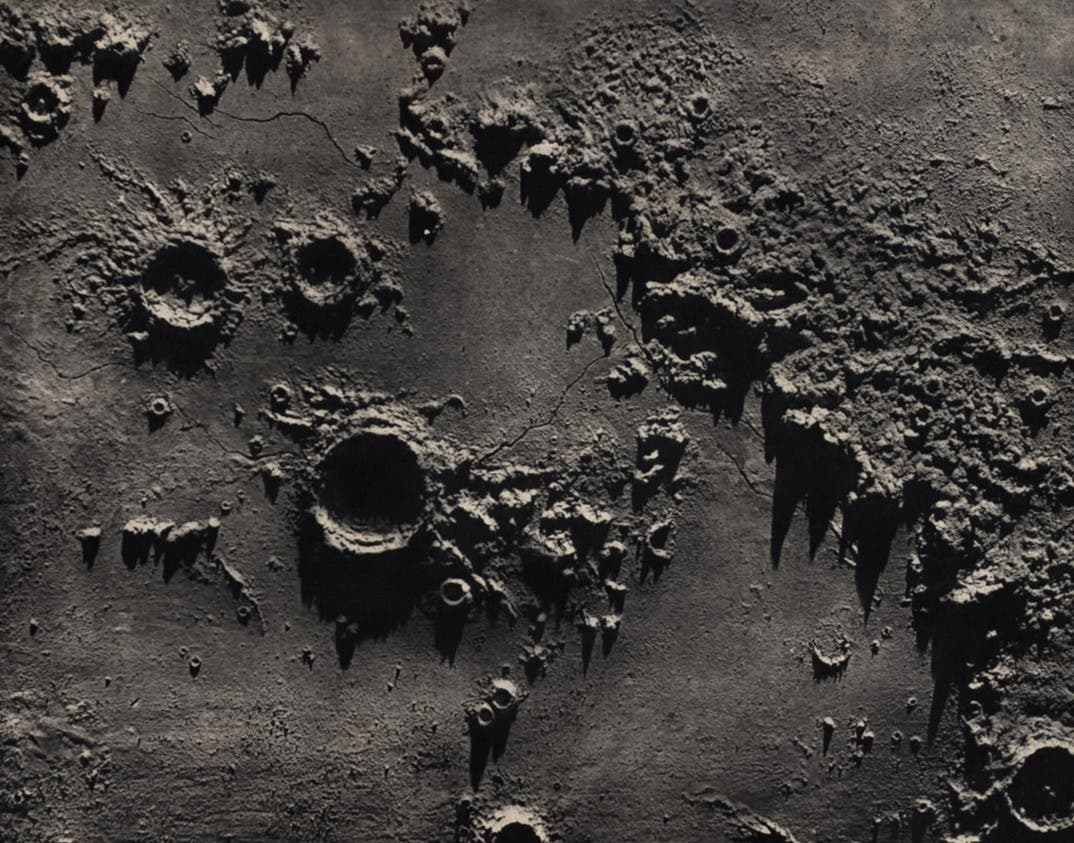Riccioli, Giovanni Battista (1598-1671).
Almagestum nouum. – Bologna: ex typographia haeredis Victorij Benatij, 1651.
The Riccioli moon map is historically of great importance, since it provided the basis for the system of lunar nomenclature still in use. It is more properly referred to as the Riccioli/Grimaldi map, since the Jesuit optician Francesco Grimaldi was apparently responsible for the map itself, while fellow-Jesuit Riccioli invented the names (and wrote the book in which the map appeared). Thus the Sea of Tranquility (Mare Tranquillitatis) traversed by the Apollo astronauts acquired its name here, as Mare Tranquillitatis, as did such prominent lunar craters as Plato, Ptolemaeus, and Tycho.

